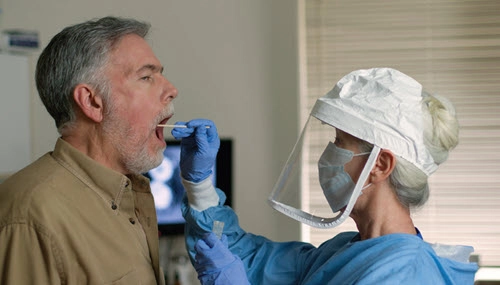Caution: Check federal guidance for PHE-related updates daily.
If you’re worried about the COVID-19 case numbers spiking, you’re not alone. In a recent update frenzy, the feds have rolled out several new policies to help providers weather the pandemic’s storm.
Read on for a breakdown of four things to add to your COVID-19 checklist.

1. Know the PHE Extension Specifics
With no immediate end in sight for the pandemic, Department of Health and Human Services (HHS) Secretary Alex Azar extended the COVID-19 public health emergency (PHE) for another 90 days, effective Oct. 23 and running through Jan. 20, 2021. This is the third PHE extension HHS has made related to the coronavirus since its original declaration on Jan. 27, 2020. The agency first extended the PHE on April 21, and then again on July 23.
Impact: “This means that the current rules and guidelines … that were relaxed during the PHE will remain in effect through most of January,” points out Acevedo Consulting in Delray Beach, Florida. This includes 1135 waivers and other flexibilities related to a myriad of Medicare policies from telehealth to lab tests to billing.
Tip: As HHS keeps pushing back the PHE deadline, the feds also keep tweaking their COVID-19 policies and FAQs. The myriad of agencies under HHS’ helm continue to alter guidance — sometimes daily — often reversing course and leaving providers with little or no time to get ready for major shifts.
It’s crucial that organizations big and small revisit their policies weekly and put in the extra research online to avoid noncompliance with the latest Medicare billing changes — especially with some claims reviews back in action.
Read the PHE renewal at www.phe.gov/emergency/news/healthactions/phe/Pages/covid19-2Oct2020.aspx.
2. Get the Scoop on 11 New Telehealth Additions
On Oct. 14, CMS announced that it was continuing its pro-telehealth push with more PHE-related options.
“For the first time using a new expedited process, CMS is adding 11 new services to the Medicare telehealth services list since the publication of the May 1, 2020, COVID-19 Interim Final Rule with comment period (IFC),” says the agency in a release. Since the expansion is already effective, eligible providers can expect payment for the new options immediately and through the duration of the pandemic. “These new telehealth services include certain neurostimulator analysis and programming services, and cardiac and pulmonary rehabilitation services,” CMS says.
Reminder: With the publication of two interim final rules in March and May, CMS already significantly expanded the telehealth services list, including options like emergency care, nursing home visits, and physical therapy. If you add the 11 new services to the already lengthy expansion list, Medicare will now reimburse eligible clinicians for 144 different telehealth services.
Plus: A whopping 12.1 million beneficiaries have received Medicare fee-for-service (FFS) care through the expansion, the release suggests.
Review both current telehealth services and the recent additions at www.cms.gov/Medicare/Medicare-General-Information/Telehealth/Telehealth-Codes.

3. AMA Offers 2 New CPT® Codes for Flu and COVID-19 Combo
On Oct. 6, the AMA released two new CPT® codes for COVID-19 that also apply to the flu. Here are the two codes and their descriptors:
“Two of the newly approved codes report nucleic acid assays that allow a single test to simultaneously detect the novel coronavirus and a combination of common viral infectious agents, including influenza A/B and respiratory syncytial virus,” said AMA President Susan R. Bailey, MD, in a release on the new codes. “Concurrent detection promises to conserve important testing resources, allowing for ongoing surveillance of influenza while testing for the novel coronavirus.”
Bonus: “The new additions and revisions to the CPT® code set have been approved for immediate use,” AMA confirms in the release.
4. Clinical Lab Certification Just Got Easier
With the cases trending up, CMS moved to speed up the certification process for clinical labs with a new tool that cuts paperwork hassles and streamlines approval.
“An obscure process and outdated modes of payment have too often caused needless delays in certifying lab testing facilities,” said CMS Administrator Seema Verma in a release. The “announcement will allow testing laboratories to promptly and painlessly register with CMS, so they can get to work, focusing on providing reliable information to combat the spread of this disease.”
Now: CMS offers a “quick start guide” that explains step by step, the updated Clinical Laboratory Improvement Amendments (CLIA) certification process. In addition, labs can now pay their fees online through the CLIA website, which will help labs get up and running more quickly, the release suggests.
Caveat: As soon as labs receive a CLIA number, they can start testing for COVID-19. “Laboratories should be aware, however, that some states may have additional licensing requirements that must be met before testing can begin,” caution attorneys Douglas Grimm and Michele Gipp with Arent Fox in online analysis.
Check out the quick start guide at www.cms.gov/files/document/laboratory-quick-start-guide-cms-clia-certification.pdf.
